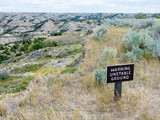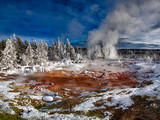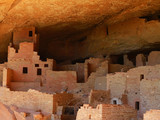Government Grants
Business Grants
Home Owner Programs
Federal Programs
About Us
ASSISTANCE FOR VISIBILITY DATA ANALYSIS AND IMAGE DISPLAY TECHNIQUES
NOTICE OF INTENT TO AWARD This Funding Announcement is not a request for applications.
This announcement is to provide public notice of the National Park Service (NPS), intention to fund the following project activities without competition.
ABSTRACT Funding Announcement P15AS00247 Project Title Assistance for Visibility Data Analysis & Image Display Techniques Recipient Colorado State University Total Anticipated Award Amount ���$895,97 6. 00 Cost Share None Anticipated Length of Agreement From date of award until 08/30/2016 Anticipated Period of Performance From date of award until 08/30/2016 Award Instrument Cooperative Agreement Statutory Authority 54 USC 101702(b) CFDA # and Title 1 5. 945 Cooperative Research & Training Programs Resources of NPS CESU���s Single Source Justification Criteria Cited (2) Continuation Point of Contact June Zastrow 303-987-6718 june_zastrow@nps.gov OVERVIEW Air pollutants can adversely affect visitor experience by degrading the vistas, affecting the natural ecosystems of these areas, and in some extreme cases, adversely affecting visitor health.
In working with NPS scientists, the Cooperative Institute for Research in the Atmosphere (CIRA) at CSU will enhance the scientific understanding of causes of visibility impairment and atmospheric loading to ecosystems to better understand the scientific basis of these issues.
This project serves the public by developing sound scientific data that informs air quality management at the local, state, and federal levels.
The visibility data and analyses produced by this project are directly used by the US Environmental Protection Agency (EPA) and by state and local air quality management agencies in their implementation of regulations under the Clean Air Act.
Similarly, data and analyses produced under this task agreement on atmospheric deposition are providing information to these agencies about the role of regulated and non-regulated pollutants in atmospheric deposition and their effect on ecosystems.
Non-government organizations, representing a wide variety of public interests, as well as industry groups, utilize the information developed under this project.
A key element of the project is to interpret and display this scientific information for the general public, enhancing their understanding of issues that can affect their enjoyment of the natural world.
CIRA and NPS scientists participate in outreach efforts in elementary and secondary schools, encouraging young students to pursue science projects.
STATEMENT OF JOINT OBJECTIVES/PROJECT MANAGEMENT PLAN The public visits national parks and wilderness areas to enjoy nature in an unimpaired state.
Air pollutants can adversely affect that visitor experience by degrading the vistas, affecting the natural ecosystems of these areas, and in some extreme cases, adversely affecting visitor health.
The National Park Service (NPS) and Colorado State University (CSU) scientists are working together to better understand the scientific basis of these issues, providing that information to regulatory agencies at both the federal and state levels, and interpreting it for the public.
The scattering and absorption of light by particles in the atmosphere affect the clarity of scenic views associated with national parks and wilderness areas.
The Interagency Monitoring of Protected Visual Environments (IMPROVE) program routinely collects samples of particles that are analyzed for their chemical composition and optical properties in order to assess their visibility impacts and source origin.
Results of these analyses will be shared with regulatory agencies, published in the scientific literature, presented at scientific meetings, and provided with the data through the web to collaborating scientists at other institutions.
Some of the most effective ways to present the impacts of pollutants on scenic vistas is by photographic imaging techniques that accurately depict how the scene will appear under various pollutant and meteorological conditions.
An image-based depiction of visibility is dependent on a firm understanding of the optical characteristics of pollutants, on state-of-the-art measuring techniques, on the ability to simulate accumulated effects, and on professional-quality image techniques.
In addition to unimpeded visibility, healthy ecosystems are critical to the long-term sustainability of our parks and the quality of the visitor experience.
Ecosystem changes due to atmospheric deposition of nitrogen compounds have been documented at many locations in the Rocky Mountains.
The origins, chemical composition, and temporal changes in the deposition are not well understood.
Field measurements are critical to understanding these changes and for charting a course for needed regulatory and policy actions to reduce nitrogen loadings.
During the spring and summer of 2011, the NPS initiated a study with the Cooperative Institute for Research in the Atmosphere (CIRA) of nitrogen deposition at Grand Teton National Park (NP).
Regional air quality modeling will be performed to assess atmospheric nitrogen deposition at class I areas in the Greater Yellowstone Area.
Oil and gas development negatively impacts air quality and visibility in pristine environments across the western United States.
One region of particular interests is the Williston Basin in the northern Great Plains, where development has significantly increased in the Bakken shale formation over the last several years.
Trend analyses have shown that aerosol composition and visibility degradation has increased in these areas over the last decade.
However, little is known about the emissions and subsequent impacts from the energy and related development on visibility, air quality, and deposition.
During the winter of 2012���2013 and winter-spring of 2013���2014, monitoring studies were performed at Theodore Roosevelt NP and other nearby sites in the Bakken Shale region of North Dakota.
Aerosol composition, visibility, ozone, and deposition data obtained during these studies, as well as other existing air quality data from the state of North Dakota, will be analyzed to understand baseline conditions and impacts of the rapid development.
Investigating the causal mechanisms for elevated pollutant levels is a critical component of the activities described here.
Eulerian, Lagrangian, and receptor models are used and integrated with measured data for source apportionment studies and to evaluate the role of meteorology and other physical and chemical processes on measured and modeled concentrations.
The results assist in the development of air quality policy positions within the NPS and inform state and federal agencies in the development of strategies to mitigate air quality issues.
These modeling tools will be used to estimate source contributions to nitrogen deposition and other pollutants at national parks and other sensitive regions in the Greater Yellowstone Area.
In addition, these tools will be used to investigate impacts from oil and gas development to air quality and visibility at western class I and II areas in the region as well as throughout the country.
The NPS and United States Forest Service (USFS) use a number of disparate air quality and other datasets to assess air quality issues affecting NPS and USFS resources.
These data are used to generate standard graphical and tabular products that represent the state of the air quality in NPS and USFS lands and to track progress toward reaching air quality improvement goals.
These products are used to communicate this information to other NPS and USFS personnel, federal and state regulators, and the general public.
The air quality research community also uses these data to conduct research projects to better assess and understand the causes of poor air quality.
Web-based database support includes activities such as providing these air quality data inventories, processing the data for trends and conditions for park units, and displaying the data for government, academic, and public use.
The sharing of these resources will be done through an unrestricted website.
The specifics identified below describe a cooperative effort between the NPS and CIRA at CSU to analyze, interpret, and make available air quality, deposition, and visibility data, and analyses of these data.
These data, interpretations, and analyses will be available to the scientific community, regulatory agencies, and the public.
RECIPIENT INVOLVEMENT CSU agrees to:
Conduct aerosol research; investigate nitrogen deposition in Rocky Mountain National Park (NP), the Greater Yellowstone area and other areas; evaluate the impacts of oil and gas development on national park lands; maintain and develop an air quality portal and database to facilitate data dissemination and analysis; and aid the development of public outreach products.
NATIONAL PARK SERVICE INVOLVEMENT NPS agrees to:
Participate in all phases of the work identified such as participate in data analysis, report writing, and will coauthor peer-reviewed publications.
Provide access to air quality monitoring locations, equipment shelters, and specialized monitoring equipment; where applicable.
SINGLE-SOURCE JUSTIFICATION DEPARTMENT OF THE INTERIOR SINGLE SOURCE POLICY REQUIREMENTS Department of the Interior Policy (505 DM 2) requires a written justification which explains why competition is not practicable for each single-source award.
The justification must address one or more of the following criteria as well as discussion of the program legislative history, unique capabilities of the proposed recipient, and cost-sharing contribution offered by the proposed recipient, as applicable.
In order for an assistance award to be made without competition, the award must satisfy one or more of the following criteria:
(1) Unsolicited Proposal ��� The proposed award is the result of an unsolicited assistance application which represents a unique or innovative idea, method, or approach which is not the subject of a current or planned contract or assistance award, but which is deemed advantageous to the program objectives; (2) Continuation ��� The activity to be funded is necessary to the satisfactory completion of, or is a continuation of an activity presently being funded, and for which competition would have a significant adverse effect on the continuity or completion of the activity; (3) Legislative intent ��� The language in the applicable authorizing legislation or legislative history clearly indicates Congress��� intent to restrict the award to a particular recipient of purpose; (4) Unique Qualifications ��� The applicant is uniquely qualified to perform the activity based upon a variety of demonstrable factors such as location, property ownership, voluntary support capacity, cost-sharing ability if applicable, technical expertise, or other such unique qualifications; (5) Emergencies ��� Program/award where there is insufficient time available (due to a compelling and unusual urgency, or substantial danger to health or safety) for adequate competitive procedures to be followed.
NPS did not solicit full and open competition for this award based the following criteria:
(2) Continuation This is a Task Agreement (P15AC01356) under Cooperative Agreement (P14AC00728) in the amount of $895,97 6. 00 with a period of performance from date of award until 08/30/201 6. This proposed project between Colorado State University and the NPS is authorized to go through the Rocky Mountains CESU at the negotiated overhead rate of 1 7. 5% because it passes the test of substantial involvement by the NPS, public purpose and consistency with the mission of the CESU Network".
This announcement is to provide public notice of the National Park Service (NPS), intention to fund the following project activities without competition.
ABSTRACT Funding Announcement P15AS00247 Project Title Assistance for Visibility Data Analysis & Image Display Techniques Recipient Colorado State University Total Anticipated Award Amount ���$895,97 6. 00 Cost Share None Anticipated Length of Agreement From date of award until 08/30/2016 Anticipated Period of Performance From date of award until 08/30/2016 Award Instrument Cooperative Agreement Statutory Authority 54 USC 101702(b) CFDA # and Title 1 5. 945 Cooperative Research & Training Programs Resources of NPS CESU���s Single Source Justification Criteria Cited (2) Continuation Point of Contact June Zastrow 303-987-6718 june_zastrow@nps.gov OVERVIEW Air pollutants can adversely affect visitor experience by degrading the vistas, affecting the natural ecosystems of these areas, and in some extreme cases, adversely affecting visitor health.
In working with NPS scientists, the Cooperative Institute for Research in the Atmosphere (CIRA) at CSU will enhance the scientific understanding of causes of visibility impairment and atmospheric loading to ecosystems to better understand the scientific basis of these issues.
This project serves the public by developing sound scientific data that informs air quality management at the local, state, and federal levels.
The visibility data and analyses produced by this project are directly used by the US Environmental Protection Agency (EPA) and by state and local air quality management agencies in their implementation of regulations under the Clean Air Act.
Similarly, data and analyses produced under this task agreement on atmospheric deposition are providing information to these agencies about the role of regulated and non-regulated pollutants in atmospheric deposition and their effect on ecosystems.
Non-government organizations, representing a wide variety of public interests, as well as industry groups, utilize the information developed under this project.
A key element of the project is to interpret and display this scientific information for the general public, enhancing their understanding of issues that can affect their enjoyment of the natural world.
CIRA and NPS scientists participate in outreach efforts in elementary and secondary schools, encouraging young students to pursue science projects.
STATEMENT OF JOINT OBJECTIVES/PROJECT MANAGEMENT PLAN The public visits national parks and wilderness areas to enjoy nature in an unimpaired state.
Air pollutants can adversely affect that visitor experience by degrading the vistas, affecting the natural ecosystems of these areas, and in some extreme cases, adversely affecting visitor health.
The National Park Service (NPS) and Colorado State University (CSU) scientists are working together to better understand the scientific basis of these issues, providing that information to regulatory agencies at both the federal and state levels, and interpreting it for the public.
The scattering and absorption of light by particles in the atmosphere affect the clarity of scenic views associated with national parks and wilderness areas.
The Interagency Monitoring of Protected Visual Environments (IMPROVE) program routinely collects samples of particles that are analyzed for their chemical composition and optical properties in order to assess their visibility impacts and source origin.
Results of these analyses will be shared with regulatory agencies, published in the scientific literature, presented at scientific meetings, and provided with the data through the web to collaborating scientists at other institutions.
Some of the most effective ways to present the impacts of pollutants on scenic vistas is by photographic imaging techniques that accurately depict how the scene will appear under various pollutant and meteorological conditions.
An image-based depiction of visibility is dependent on a firm understanding of the optical characteristics of pollutants, on state-of-the-art measuring techniques, on the ability to simulate accumulated effects, and on professional-quality image techniques.
In addition to unimpeded visibility, healthy ecosystems are critical to the long-term sustainability of our parks and the quality of the visitor experience.
Ecosystem changes due to atmospheric deposition of nitrogen compounds have been documented at many locations in the Rocky Mountains.
The origins, chemical composition, and temporal changes in the deposition are not well understood.
Field measurements are critical to understanding these changes and for charting a course for needed regulatory and policy actions to reduce nitrogen loadings.
During the spring and summer of 2011, the NPS initiated a study with the Cooperative Institute for Research in the Atmosphere (CIRA) of nitrogen deposition at Grand Teton National Park (NP).
Regional air quality modeling will be performed to assess atmospheric nitrogen deposition at class I areas in the Greater Yellowstone Area.
Oil and gas development negatively impacts air quality and visibility in pristine environments across the western United States.
One region of particular interests is the Williston Basin in the northern Great Plains, where development has significantly increased in the Bakken shale formation over the last several years.
Trend analyses have shown that aerosol composition and visibility degradation has increased in these areas over the last decade.
However, little is known about the emissions and subsequent impacts from the energy and related development on visibility, air quality, and deposition.
During the winter of 2012���2013 and winter-spring of 2013���2014, monitoring studies were performed at Theodore Roosevelt NP and other nearby sites in the Bakken Shale region of North Dakota.
Aerosol composition, visibility, ozone, and deposition data obtained during these studies, as well as other existing air quality data from the state of North Dakota, will be analyzed to understand baseline conditions and impacts of the rapid development.
Investigating the causal mechanisms for elevated pollutant levels is a critical component of the activities described here.
Eulerian, Lagrangian, and receptor models are used and integrated with measured data for source apportionment studies and to evaluate the role of meteorology and other physical and chemical processes on measured and modeled concentrations.
The results assist in the development of air quality policy positions within the NPS and inform state and federal agencies in the development of strategies to mitigate air quality issues.
These modeling tools will be used to estimate source contributions to nitrogen deposition and other pollutants at national parks and other sensitive regions in the Greater Yellowstone Area.
In addition, these tools will be used to investigate impacts from oil and gas development to air quality and visibility at western class I and II areas in the region as well as throughout the country.
The NPS and United States Forest Service (USFS) use a number of disparate air quality and other datasets to assess air quality issues affecting NPS and USFS resources.
These data are used to generate standard graphical and tabular products that represent the state of the air quality in NPS and USFS lands and to track progress toward reaching air quality improvement goals.
These products are used to communicate this information to other NPS and USFS personnel, federal and state regulators, and the general public.
The air quality research community also uses these data to conduct research projects to better assess and understand the causes of poor air quality.
Web-based database support includes activities such as providing these air quality data inventories, processing the data for trends and conditions for park units, and displaying the data for government, academic, and public use.
The sharing of these resources will be done through an unrestricted website.
The specifics identified below describe a cooperative effort between the NPS and CIRA at CSU to analyze, interpret, and make available air quality, deposition, and visibility data, and analyses of these data.
These data, interpretations, and analyses will be available to the scientific community, regulatory agencies, and the public.
RECIPIENT INVOLVEMENT CSU agrees to:
Conduct aerosol research; investigate nitrogen deposition in Rocky Mountain National Park (NP), the Greater Yellowstone area and other areas; evaluate the impacts of oil and gas development on national park lands; maintain and develop an air quality portal and database to facilitate data dissemination and analysis; and aid the development of public outreach products.
NATIONAL PARK SERVICE INVOLVEMENT NPS agrees to:
Participate in all phases of the work identified such as participate in data analysis, report writing, and will coauthor peer-reviewed publications.
Provide access to air quality monitoring locations, equipment shelters, and specialized monitoring equipment; where applicable.
SINGLE-SOURCE JUSTIFICATION DEPARTMENT OF THE INTERIOR SINGLE SOURCE POLICY REQUIREMENTS Department of the Interior Policy (505 DM 2) requires a written justification which explains why competition is not practicable for each single-source award.
The justification must address one or more of the following criteria as well as discussion of the program legislative history, unique capabilities of the proposed recipient, and cost-sharing contribution offered by the proposed recipient, as applicable.
In order for an assistance award to be made without competition, the award must satisfy one or more of the following criteria:
(1) Unsolicited Proposal ��� The proposed award is the result of an unsolicited assistance application which represents a unique or innovative idea, method, or approach which is not the subject of a current or planned contract or assistance award, but which is deemed advantageous to the program objectives; (2) Continuation ��� The activity to be funded is necessary to the satisfactory completion of, or is a continuation of an activity presently being funded, and for which competition would have a significant adverse effect on the continuity or completion of the activity; (3) Legislative intent ��� The language in the applicable authorizing legislation or legislative history clearly indicates Congress��� intent to restrict the award to a particular recipient of purpose; (4) Unique Qualifications ��� The applicant is uniquely qualified to perform the activity based upon a variety of demonstrable factors such as location, property ownership, voluntary support capacity, cost-sharing ability if applicable, technical expertise, or other such unique qualifications; (5) Emergencies ��� Program/award where there is insufficient time available (due to a compelling and unusual urgency, or substantial danger to health or safety) for adequate competitive procedures to be followed.
NPS did not solicit full and open competition for this award based the following criteria:
(2) Continuation This is a Task Agreement (P15AC01356) under Cooperative Agreement (P14AC00728) in the amount of $895,97 6. 00 with a period of performance from date of award until 08/30/201 6. This proposed project between Colorado State University and the NPS is authorized to go through the Rocky Mountains CESU at the negotiated overhead rate of 1 7. 5% because it passes the test of substantial involvement by the NPS, public purpose and consistency with the mission of the CESU Network".
Related Programs
Cooperative Research and Training Programs Resources of the National Park System
Department of the InteriorObtain Full Opportunity Text:
Not Available
Additional Information of Eligibility:
n/a
Full Opportunity Web Address:
Contact:
Matthew DonahueContract SpecialistPhone 202-366-9096
Agency Email Description:
Contract Specialist
Agency Email:
matthew.donahue@dot.gov
Date Posted:
2015-07-28
Application Due Date:
2015-08-07
Archive Date:
2015-08-08
Social Entrepreneurship
Spotlight
When it Comes to Social Enterprises, Failure is the Best Platform for Innovation

In the world of social enterprises, failure is a cringe-worthy moment nobody wants to talk about. But, social entrepreneurs can benefit from their failures.





